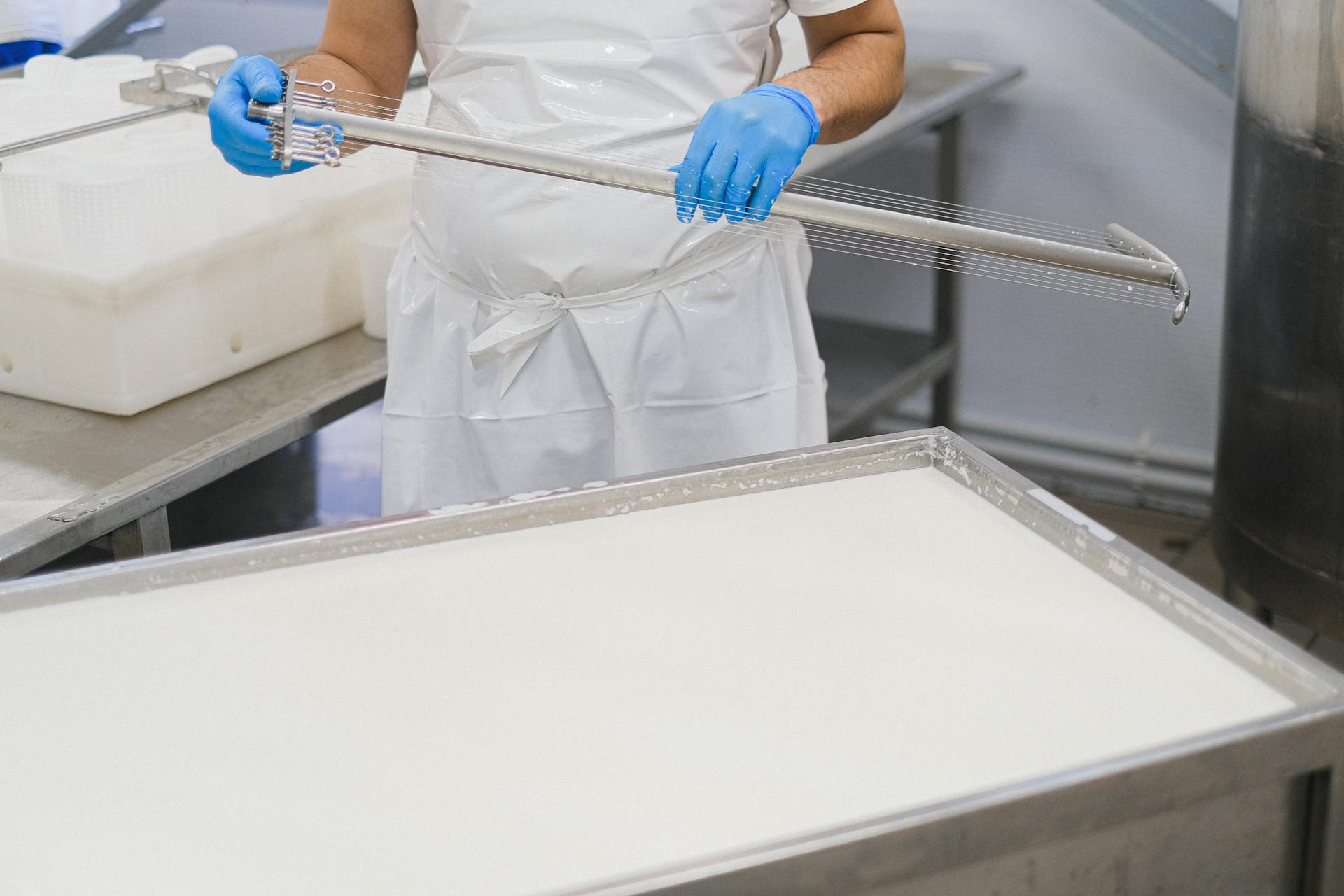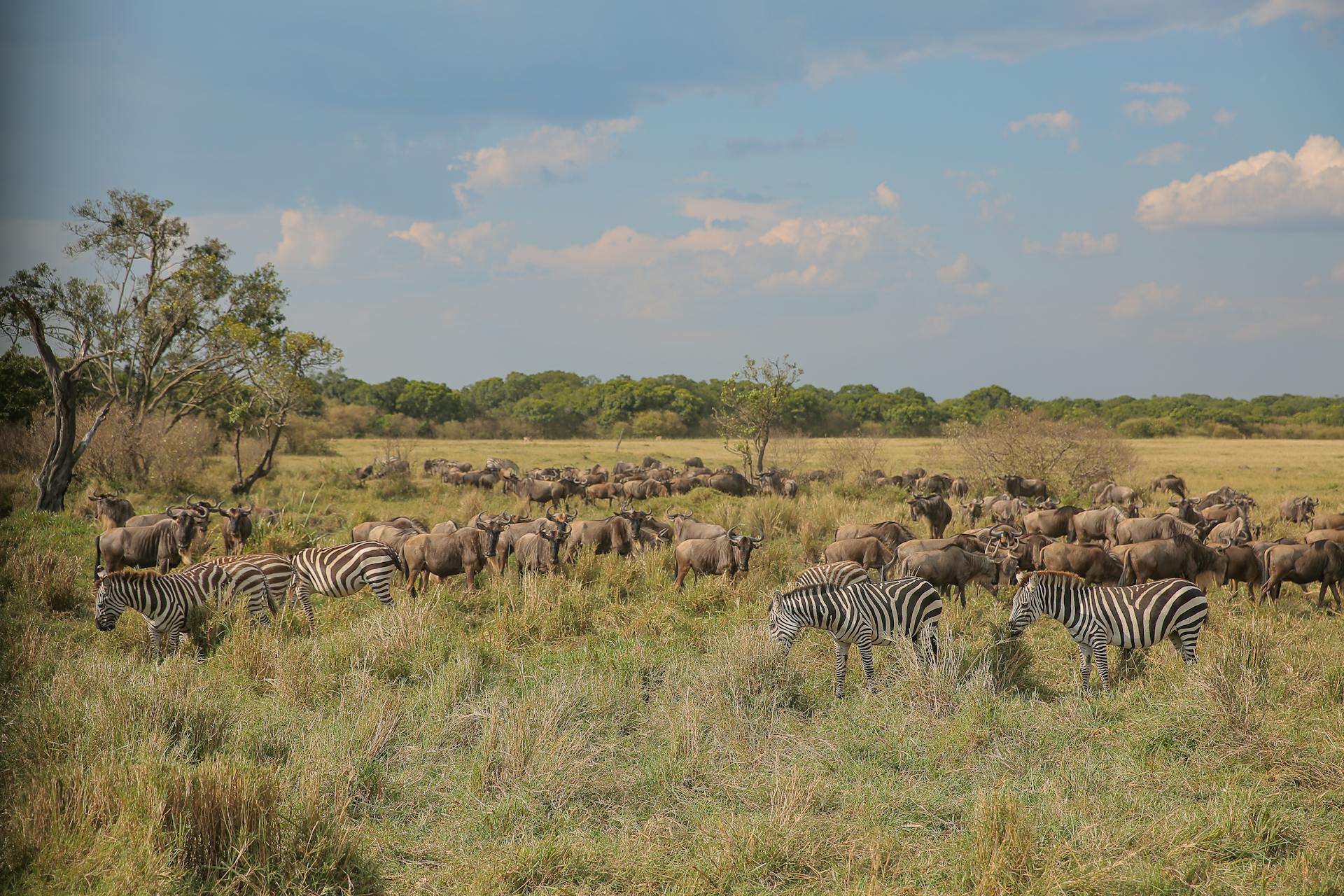
Producers and consumers are the backbone of any economy, and understanding their roles is crucial to grasping the basics of economics.
Producers are the ones who create goods and services, such as farmers who grow crops, manufacturers who build cars, and artists who create paintings.
Their primary goal is to make a profit by selling their products at a price that is higher than their production cost.
A good example of a producer is a baker who bakes bread and sells it to customers at a local market.
Consumers, on the other hand, are the ones who buy goods and services from producers.
They play a vital role in the economy by creating demand for products, which in turn drives production and economic growth.
Consumers can be individuals, businesses, or even governments, and their purchasing decisions have a significant impact on the economy.
What Is Producer?
A producer is someone who creates value by turning raw materials into something useful for people to buy.
Producers aim to increase the value of an object or create a new one that meets people's needs.
A small company producer, like a furniture craftsman, buys materials such as wood and glue to create furniture.
The resulting furniture has a higher selling value because it involves designing and building a product, not just selling raw materials.
Furniture craftsmen add value to wood by transforming it into something people want to buy.
Functions and Roles
Producers play a crucial role in creating goods and services that meet customer needs at a price that reflects their added value.
They ensure the quality of their products, adhering to prevailing standards, and continuously innovate to create new and improved goods and services.
Producers also provide clear and honest information about their products, including their condition, guarantee, and usage instructions.
Here are some key functions of producers:
- Producing goods and services according to customer needs
- Providing added value to previous goods or services
- Ensuring quality based on prevailing standards
- Creating innovative products to help consumers
- Providing true and honest information about their products
- Treating consumers correctly and honestly
- Providing employment opportunities and contributing to economic activities
- Following local rules and regulations
Distributors, on the other hand, help producers distribute their goods and services to customers, allowing producers to focus on production and quality control.
Distributors also oversee price stability and conduct promotions to serve customers better, especially in regional areas.
By building distribution centers across provinces, distributors make it easier for consumers to access the goods and services they need.
What Is a Distributor?
A distributor is a party who buys goods in finished form from producers and sells them again without modifying the goods.
Distributors can sometimes add a process, like packaging, to the goods they sell. For example, a distributor buys hand washing soap in large drums and packages it into smaller bottles.
Distribution can have multiple levels, with distributors buying from producers, wholesalers buying from distributors, and then retailers or consumers buying from wholesalers.
In some cases, distributors are limited to just packaging the goods they receive from producers.
Retailer Functions and Roles
Retailers play a vital role in the supply chain, serving as an important marketing channel for goods from producers. They help increase sales by implementing strategies like right placement, banners, advertisements, offers, and more in their stores.
Retailers make it easy for consumers to get the goods and services they need, with store location being a crucial factor in offline retail. This is especially true for minimarket retail, where a good location is essential for success.
Retailers provide added value to goods by offering services like installation, customer support, and warranties. They also offer a variety of goods at different prices, catering to different consumer needs.
Here are the key functions and roles of retailers:
- Marketing and Sales: Retailers serve as a marketing channel for producers, increasing sales through strategies like placement, banners, and promotions.
- Easy Access: Retailers make goods easily accessible to consumers, especially in offline retail where store location is crucial.
- Value-Added Goods: Retailers provide added value to goods by offering services like installation, customer support, and warranties.
- Price Variety: Retailers offer a variety of goods at different prices, catering to different consumer needs.
- Benefits for Producers and Distributors: Retailers work with distributors and manufacturers to make goods sell quickly.
By providing these functions and roles, retailers help producers and distributors achieve their goals, ultimately contributing to the success of the supply chain.
Cattle Economics
Cattle Economics is a vital aspect of the beef industry, with producers and consumers playing a crucial role in shaping the market.
The global cattle market is estimated to be worth over $1 trillion, with the United States, Brazil, and China being the top three beef-producing countries.
Cattle prices can fluctuate greatly depending on factors such as weather, disease outbreaks, and demand from consumers.
In the United States, the average price of a cow is around $1,500, with prices ranging from $800 to $3,000 depending on the breed, age, and quality of the animal.
Consumers are willing to pay a premium for high-quality beef, with grass-fed beef commanding a higher price than grain-fed beef.
The cattle industry is also a significant contributor to the economy, with many rural communities relying on cattle farming as a source of income.
A fresh viewpoint: How Does Price Discrimination Benefit Producers and Consumers
Frequently Asked Questions
What are consumer and producer goods in economics?
Consumer goods are products bought for personal use, while producer goods are items used by companies to manufacture more goods, such as factories, warehouses, and office buildings. Understanding the difference between these two types of goods is essential for businesses and individuals alike.
Sources
- https://edexceleconomicsrevision.com/home/theme-1-introduction-to-markets-and-market-faliure/consumer-and-producer-surplus/
- https://www.ireappos.com/news/en/function-and-role-of-manufacturer-distributor/
- https://utbeef.tennessee.edu/cattle-economics-consumers-producers-and-cattle/
- https://www.linkedin.com/pulse/consumers-versus-producers-understanding-roles-coach-toyin-umesiri-
- https://mises.org/mises-wire/producers-not-consumers-are-engine-economic-growth
Featured Images: pexels.com


